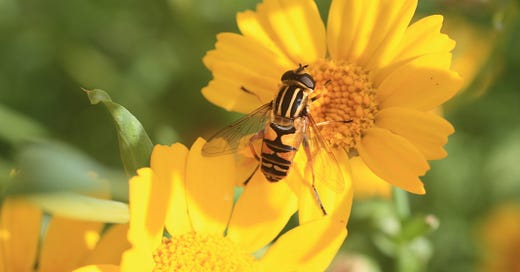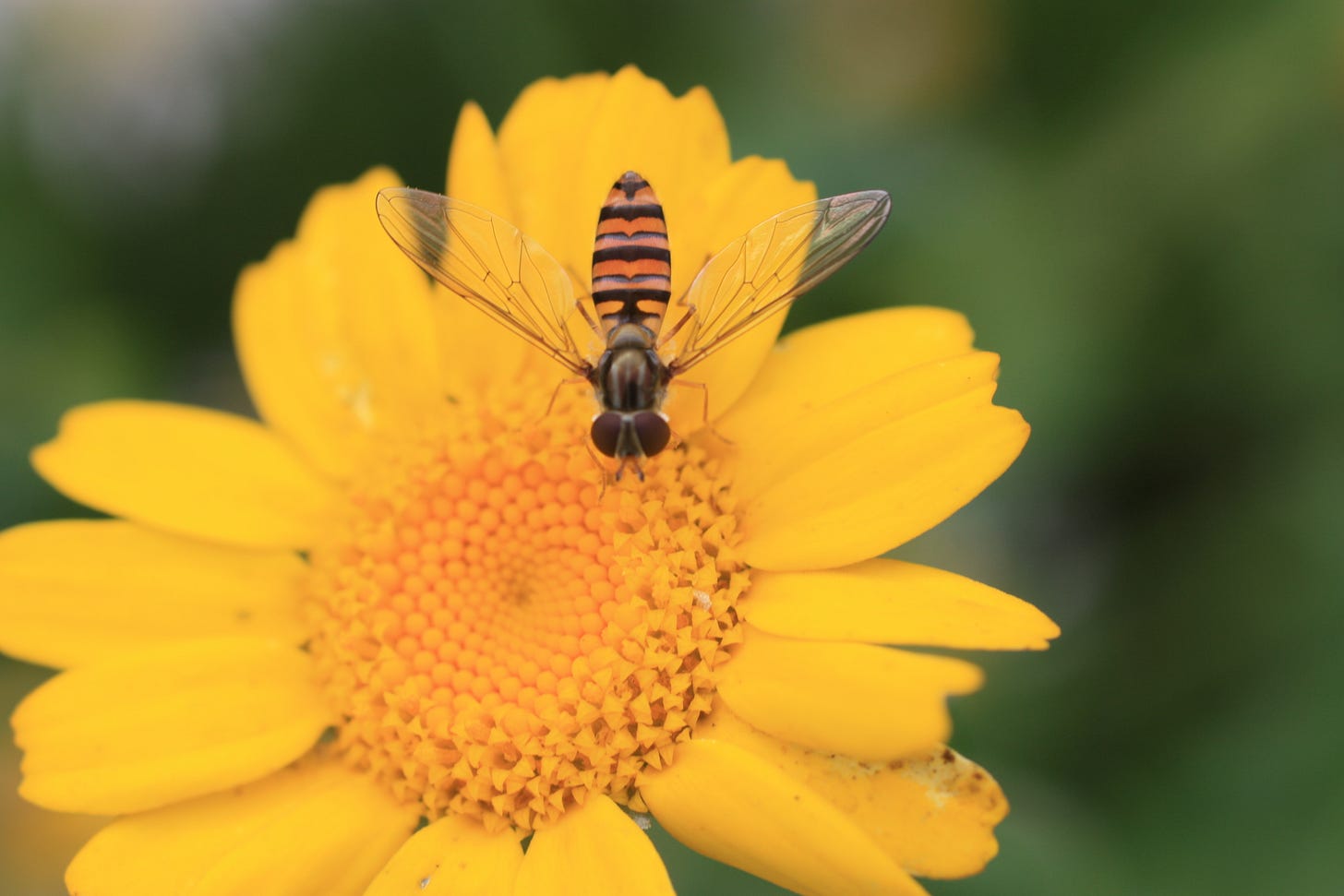Did you know that insects make up over half the species on Earth? Yet we’re losing insects far faster than we’re losing better known wildlife like mammals and birds. The causes are many and complex, but if we are to have any hope of stopping this insect crisis (and the wider loss of wildlife) from getting any worse, we need urgently to reverse habitat loss, clean-up polluted waters, address climate change, and put an end to our dependence on pesticides.
The UK's flying insect population declined by 60% in the 20 years up to 2022*. The rich diversity of insect species that populate the planet is at risk of being whittled down to a small number of generalist species, tolerant of the damage that we’re doing to the ecosystem.
The UK’s Guardian newspaper is doing its bit to increase awareness around insects and other invertebrates. For the last couple of years the newspaper has run an Invertebrate of the Year* contest, every year highlighting a different selection of interesting invertebrates for readers to vote for their favourite. You can read the articles about the selected creatures here and read about the winner here.
Buglife, the UK charity for insect conservation, has a campaign called No Insectinction*, that calls on governments and decision makers to halt the current crisis in insect populations. The charity also offers five easy ways for people to help insects. We should:
a) stop using pesticides,
b) leave untidy areas in our gardens (to give insects places to live),
c) reduce our carbon footprint (climate change is part of the reason why so many insect species are declining)
d) find alternatives to peat (peat stores carbon, digging it up increases carbon emissions, which causes climate change), and
e) only buy home-grown plants for our gardens (plants imported from other countries can bring in pests and diseases that can then spread).
Another way to help insects is to take part on surveying their numbers. This is something I do every year now with the UK Butterfly Monitoring Scheme, which offers a number of ways to get involved in butterfly surveys.
This year the Royal Horticultural Society’s Wild About Gardens campaign is, in conjunction with the Wildlife Trusts, asking people to step up to be Hoverfly Heroes.*
Hoverflies are one of the less well known groups of insects. Yet they are as valuable as pollinators as are bees, visiting 72% of crops globally. There are around 6,000 species of hoverflies in the world, of which over 250 can be found in the UK. Many hoverflies mimic bees or wasps (though don’t have stings), some of them migrate large distances and several of them have fun common names. If you’re in the UK, look out for the Marmalade Hoverfly, the Footballer Hoverfly or the Batman Hoverfly.
I became fascinated by hoverflies a few years ago and have so far seen around 26 different species around Edinburgh. But I’ve definitely noticed a decline in hoverflies (and other species of insects) over the past few years.
So how can we help these vital insects?
Hoverfly Heroes are being asked to help hoverflies by planting some of their favourite plants, offering pollen and nectar sources for adults, and creating homes for hoverfly larvae. Larvae can be found in shrubs, log piles, pools and watery hollows.
You can pledge to become a Hoverfly Hero here.
Hoverflies are also a very satisfying group of insects to learn about. There’s a manageable number of species; they can be found in all types of places including many gardens; many species are relatively easy to identify once you’ve got your eye in while the more difficult species offer a nice identification challenge to the more experienced hoverfly watcher. If you’re in the UK, useful resources for identifying hoverflies include the Nature Spot Hoverfly pages, the All About Hoverflies site and Steven Falk’s album of photos of hoverflies.
If you’re in the UK and interested in hoverflies, it’s useful to join the UK Hoverfly Group on Facebook. This is a friendly group that offers help with identification and encourages people to record the hoverflies they see. Recording wildlife (particularly under-recorded groups like hoverflies) is an important part of conservation as you can read in the earlier post below
Using your love of nature to help conservation
In previous posts I've talked about butterfly surveying and the wildlife surveys I did a few years ago in Edinburgh's council managed cemeteries. In both cases, the survey results feed into recording wildlife and then further on feed into management decisions relating to how best look after the sites to benefit both nature and people. In this post, I wa…
Many species of insects may be declining, but keep your eyes open and it can be amazing what you can find. The other day I took out the recycling and found this odd looking insect on the recycling bin
I recognised it immediately as a plume moth, but had to look up the plume moth pages on Nature Spot to identify it to species level. Luckily my photo seems to be good enough to identify it as a Beautiful Plume Moth (Amblyptilia acanthadactyla). So, keep your eyes open for nature, even in the middle of the city!
References and Links
UK's flying insects have declined by 60% in 20 years on the Natural History Museum website.
No Insectinction the 2020 Report from Buglife.
Pollination by Hoverflies in the Anthropocene academic paper (2020) on the Proceedings of the Royal Society of Biological Sciences website.
Invertebrate of the Year on the Guardian website.
What I’ve been Reading
Jungle by Patrick Roberts looks at the role that tropical forests have played in the evolution of life on earth and human history.









Thanks for this. My sons love hoverflies and are already on the lookout for them in our garden. Love the way they fly in front of us - always imagine they're taking a good look!
Thanks for sharing this, Juliet. I had not heard of hoverflies before. It is often those overlooked and unappreciated species that do much of the 'heavy lifting' in Nature. Hopefully with awareness we can begin to help rather than hurt what humanity is doing to the world around us.